What is a food scientist? A day in the life at Cargill.
Read Time: 8 minutes
February 01, 2024
Every second, all over the world, someone is biting into something delicious and nutritious.
Odds are, long before that bite occurred, a food scientist had spent countless hours researching and experimenting how to grow, craft or improve that food.
But what is a food scientist?
Just like it sounds: A food scientist is someone who studies the nature and quality of food, often researching new and innovative ways to improve nourishment for people and our planet.
What does a food scientist do?
Food scientists work across multiple areas in agriculture and food science. In many ways, they are the magicians behind our modern advancements in food production, from vertical farming to plant breeding, alternative proteins to microbiome-friendly beverages.
Cargill food scientists are among 2,500 global research and development (R&D) experts who help produce food that is as nutritious, delicious and sustainable as possible.
To get a true sense of the innovative work they do each day, several food scientists gave us snapshots into their worlds. Follow along for a day in the life of a Cargill food scientist.
8:15 a.m.: Some ‘light’ reading — on protein phosphorylation — to start the day
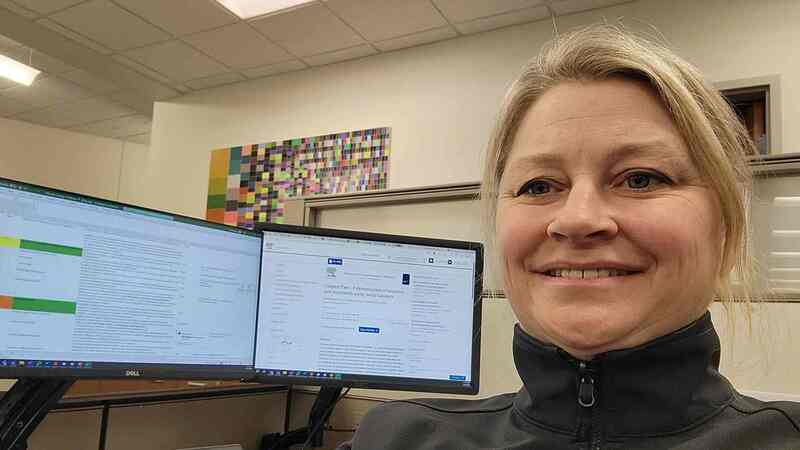 Cargill Global Biology Leader Erin Marasco smiles in front of her computer at Cargill’s Minneapolis Research and Development Center.
Erin Marasco takes a sip of coffee, fires up her computer at Cargill’s Minneapolis Research and Development (R&D) Center and pulls up a recent scientific journal article.
Cargill Global Biology Leader Erin Marasco smiles in front of her computer at Cargill’s Minneapolis Research and Development Center.
Erin Marasco takes a sip of coffee, fires up her computer at Cargill’s Minneapolis Research and Development (R&D) Center and pulls up a recent scientific journal article.
The focus: an analysis of protein phosphorylation. (In case you’re not a food microbiologist, they help your body’s cells function properly.)
As a global biology leader, it’s crucial for Erin to stay up to date on the latest in agricultural science and the food industry so she can advise and work with her team to develop new projects.
9:32 a.m.: A little dirt never hurt, even this early in the morning
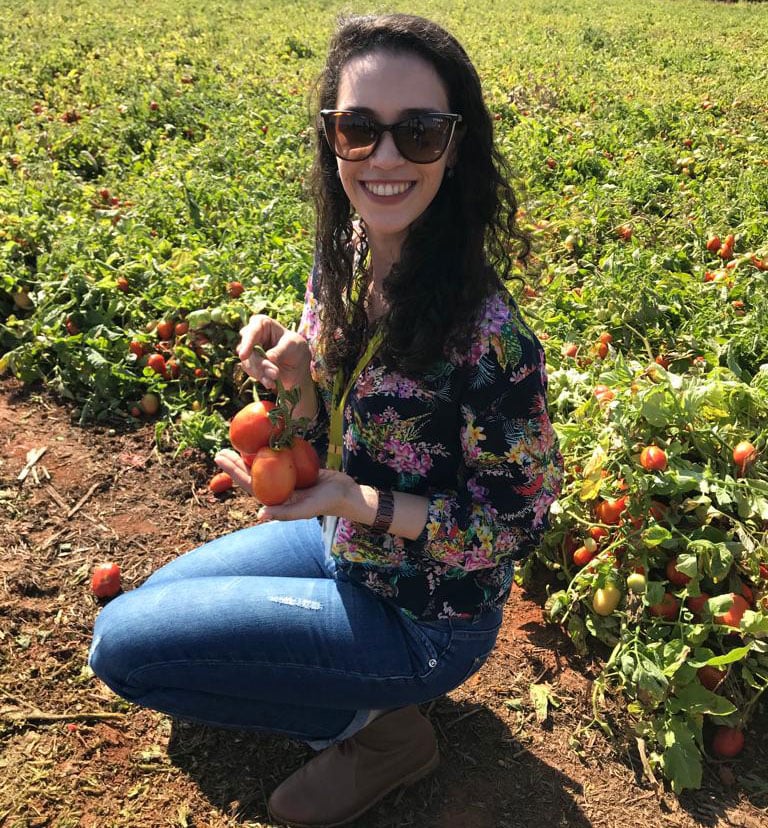 Cargill Product Development Specialist Jessica Grigoletto visits a nearby tomato farm to get a (literal) feel for the fruit that will be used in the tomato paste she’s developing.
The sun is rising in Goiânia, Brazil, providing Jessica Grigoletto enough light to see the dirt on her jeans.
Cargill Product Development Specialist Jessica Grigoletto visits a nearby tomato farm to get a (literal) feel for the fruit that will be used in the tomato paste she’s developing.
The sun is rising in Goiânia, Brazil, providing Jessica Grigoletto enough light to see the dirt on her jeans.
It’s not the dirt she’s kneeling in that interests her, though; it’s the tomato plants growing out of it.
As she bends down to examine one, Jessica can imagine what that tomato might become. She’s a product development specialist for Cargill in Brazil, responsible for developing the tomato products in our expansive food portfolio in the region, ranging from sauces to pastes.
Currently Jessica is developing a condimented tomato paste for a new product that will end up on someone’s plate. By better understanding how the tomatoes are cultivated and harvested, she can better understand how the fruit will perform.
“I love to see our products that we’ve developed end up on supermarket shelves,” Jessica says.
10:47 a.m.: No lumps in the functional lipid
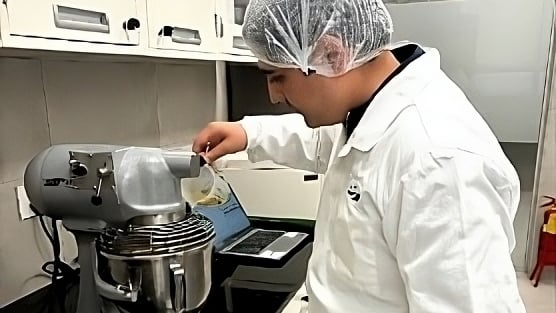 Food scientist Gagan Bhardwaj pours functional lipid into a mixer as part of developing a new beverage powder at the Cargill Innovation Center in Gurgaon, India.
Gagan Bhardwaj is on the lookout for lumps. Specifically, he’s ensuring his functional lipid blends smoothly into a beverage powder.
Food scientist Gagan Bhardwaj pours functional lipid into a mixer as part of developing a new beverage powder at the Cargill Innovation Center in Gurgaon, India.
Gagan Bhardwaj is on the lookout for lumps. Specifically, he’s ensuring his functional lipid blends smoothly into a beverage powder.
Standing in front of a mixer, much like one that might be in your own kitchen, Gagan slowly pours in the melted functional lipid. Cargill scientists like himself to foam at a much lower level than competitors’ products.
The next challenge? How to make a uniform mix when the lipid is solid at room temperature, which is how it will be used in its finished form.
For Gagan, becoming a Cargill food scientist was all about solving challenges like this and figuring out how to create “value-added products that can be a game changer” for customers, he says.
At the Cargill Innovation Center in Gurgaon, India, he does just that every day.
12:51 p.m.: A taste of the fusion of food science
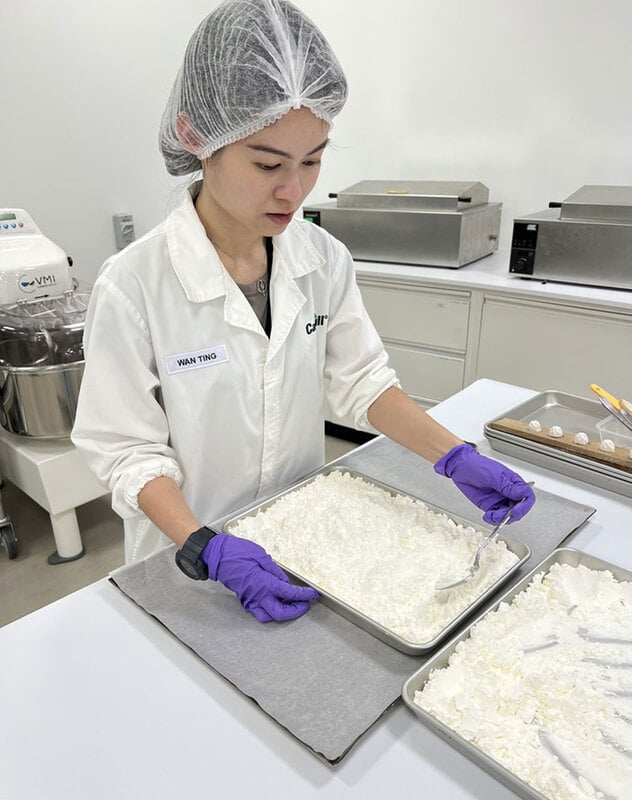 Food scientist Wan Ting Soh looks down at the starch she is stamping at the Cargill Innovation Center in Singapore.
Even as Wan Ting Soh lifts the bottle to her mouth, she sometimes has a hard time believing that tasting the food is actually part of her job. And not just a nice perk — many Cargill food scientists are highly-trained to taste specific ingredients, lingering tastes and other subtle building blocks of flavor.
Food scientist Wan Ting Soh looks down at the starch she is stamping at the Cargill Innovation Center in Singapore.
Even as Wan Ting Soh lifts the bottle to her mouth, she sometimes has a hard time believing that tasting the food is actually part of her job. And not just a nice perk — many Cargill food scientists are highly-trained to taste specific ingredients, lingering tastes and other subtle building blocks of flavor.
Indeed, here she is at the Cargill Innovation Center in Singapore, grading the texture and taste of the acidified dairy drink that uses her team’s new methoxyl pectin, which is typically used as a gelling or thickening agent in food.
“Food science and product development, especially, are a fusion between creativity and the technical,” Wan Ting says. “That makes it interesting yet challenging at the same time.”
Whether she’s evaluating moulding starch or running tests for a new pilot, Wan Ting’s role as a dairy and sugar confectionary puts her at the heart of that fusion every day.
1:14 p.m.: Popping into the lab for some microbiome sequencing
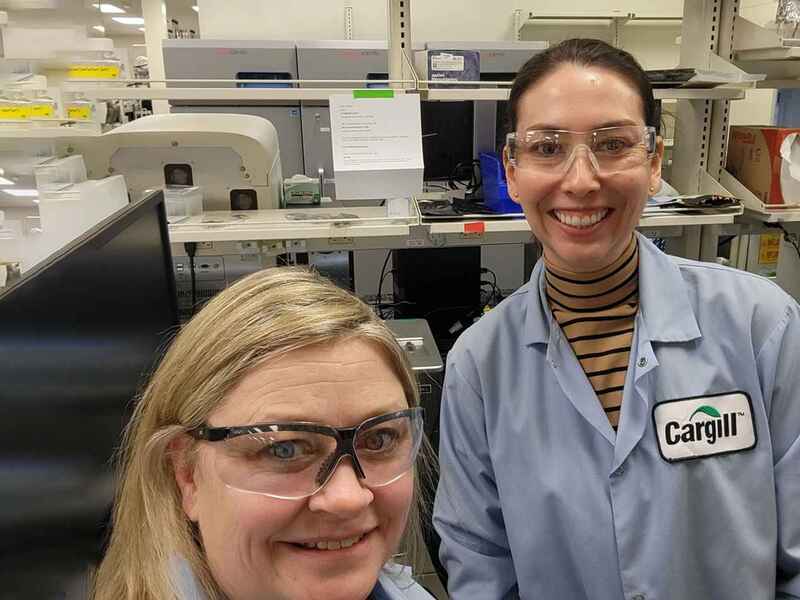 Erin Marasco and microbiome expert Maria Sardi stand in front of Maria’s lab station at Cargill’s Minneapolis R&D Center.
Erin makes her way across the Minneapolis R&D Center. She’s looking for Maria Sardi, one of Cargill’s resident microbiome experts.
Erin Marasco and microbiome expert Maria Sardi stand in front of Maria’s lab station at Cargill’s Minneapolis R&D Center.
Erin makes her way across the Minneapolis R&D Center. She’s looking for Maria Sardi, one of Cargill’s resident microbiome experts.
As Cargill food scientists, Erin and Maria have access to state-of-the-art facilities and tools for their research, including the R&D Center’s new microbiome sequencing equipment.
Microbiome sequencing allows the scientists to take DNA directly from their samples and sequence what chemical bases make up the DNA. That sequencing offers valuable insights into the range of microbes in the food, knowledge that can be applied to innovating new foods and products.
“By using biotechnology to produce ingredients for Cargill,” Erin says, “we have the opportunity to launch at a global scale bio-based ingredients that are sustainable or challenging to supply in other ways.”
2:02 p.m.: The sauce is the boss
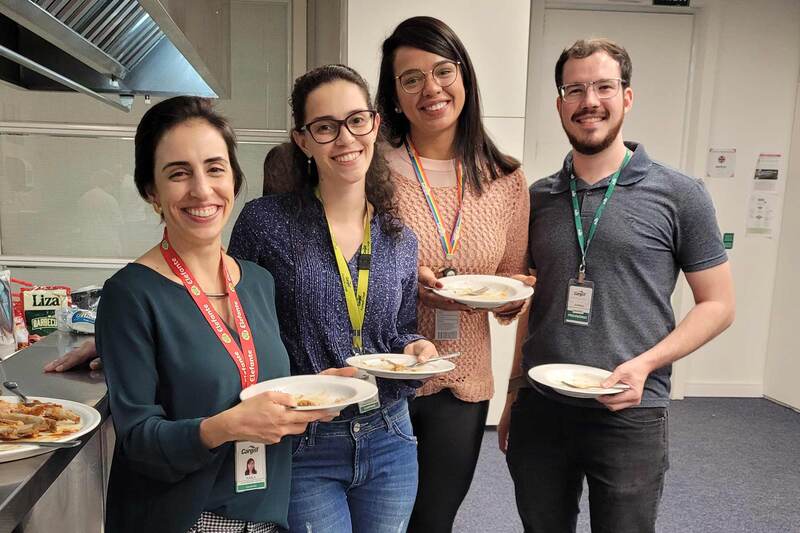 Food scientist Jessica Grigoletto (second from left) smiles with her colleagues after a BBQ tasting session.
Jessica looks down at her hands: They’re messy, once again.
Food scientist Jessica Grigoletto (second from left) smiles with her colleagues after a BBQ tasting session.
Jessica looks down at her hands: They’re messy, once again.
This time, it’s BBQ sauce.
After working for the past several months on a new sauce prototype, Jessica and her colleagues have reached one of the more appetizing stages of their work: the tasting session.
The ribs and hamburgers in front of the food scientists have been slathered with competitors’ sauces as well as their new prototype, a sensory reminder that their work ends up in the center of people’s plates.
3:21 p.m.: Cranking up the heat? Cool.
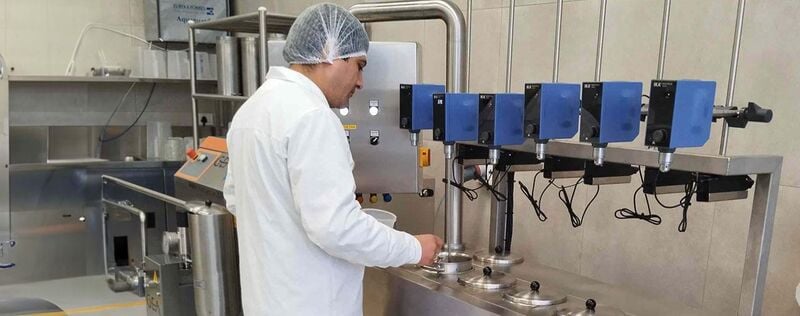 Gagan and his team regularly work with powders and liquids to create unique products for Cargill’s customers.
Gagan is perched in front of a machine again — and this time, it's ultra hot (literally).
Gagan and his team regularly work with powders and liquids to create unique products for Cargill’s customers.
Gagan is perched in front of a machine again — and this time, it's ultra hot (literally).
He and his team are using the Ultra High Temperature machine in the lab to create original, ready-to-drink products like fruit drinks and milkshakes. Whether it’s powders or liquids, creating products that offer value to our customers is at the heart of what Gagan and his colleagues do every day.
5:06 p.m.: Food science — sometimes, it’s a strain
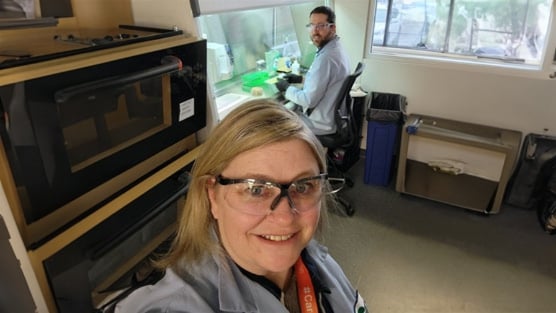 Cargill biochemist Keith Brady looks up from his work on yeast strains at Cargill’s Minneapolis R&D Center with Erin Marasco.
Before Erin heads home for the day, she has one more visit to make.
Cargill biochemist Keith Brady looks up from his work on yeast strains at Cargill’s Minneapolis R&D Center with Erin Marasco.
Before Erin heads home for the day, she has one more visit to make.
This time it’s to see biotechnologist Keith Brady, who’s developing yeast strains that can produce proteins for specialty nutrition.
Collaboration across food scientists and experts has led to some of our most innovative products. There’s the fermentation of EverSweet, a non-caloric sweetener that Erin helped develop. And SimPure™ Soluble Rice Flour, which overcame the challenge of traditional rice flours not being very soluble.
Some of Erin’s most meaningful work, she says, has been replacing ingredients that were traditionally produced from petroleum with products made from fermentation with sugar.
“The idea of working on complex scientific issues targeting some of the most complex social and environmental issues around the world has always been inspiring,” Erin says.
Her colleagues across Cargill share her sentiment as they work to nourish the world in safe, responsible and sustainable way — no matter what time it is in their day.
Are you interested in a food science, research and development or innovation role at Cargill? View open roles and learn how you can join our team of professionals who are shaping the future.

20 innovations that give a glimpse into the future of food
Learn how we’re shaping the future of food with innovations that reimagine what’s possible across food and agriculture.

What’s it like to work in a food production facility?
Our plant employees are central to our ability to nourish the world. They’re also committed individuals with heartwarming stories of success. Meet two of them.
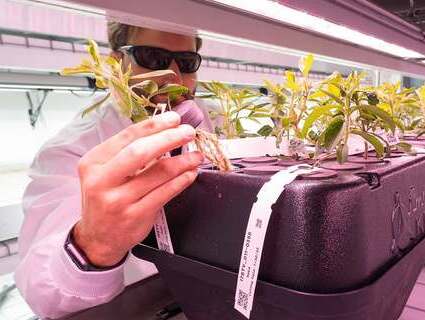
5 agriculture and food trends to be excited about in 2024
Cargill’s chief technology officer shares agriculture and food trends that are shaping the future.
